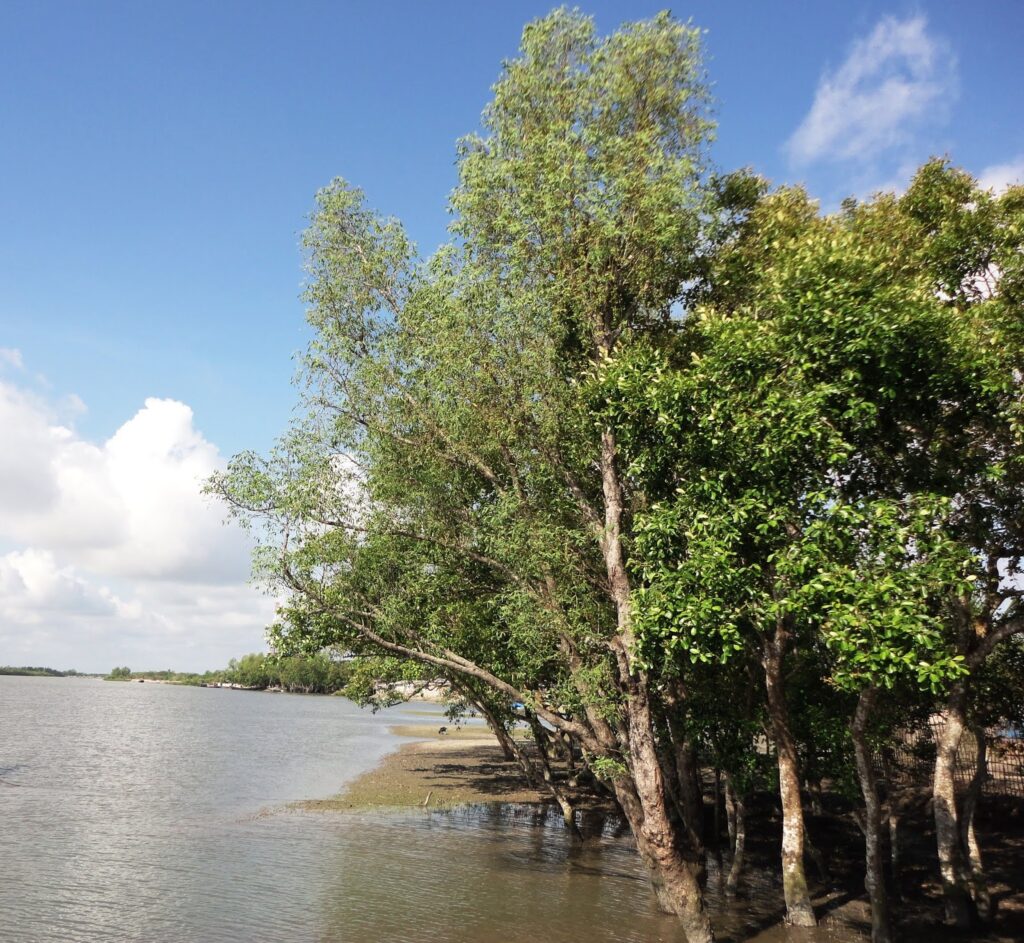Bain (Avicennia officinalis)

Bain (Avicennia officinalis), also known as Indian Mangrove, Black Mangrove, or Grey Mangrove, is a species of mangrove tree belonging to the Acanthaceae family. It is native to the mangrove forests of the Indian subcontinent, Southeast Asia, and northern Australia. Bain trees are commonly found in coastal areas, particularly along estuaries, tidal creeks, and the seaward edges of mangrove forests, where they can tolerate high levels of salinity.
Taxonomy of Bain (Avicennia officinalis):
Kingdom: Plantae,
Phylum : Tracheophyta,
Class : Magnoliopsida,
Order : Lamiales
Family : Acanthaceae.
It is one of the primary mangrove species found in the Indian Ocean region.
Morphology of Bain (Avicennia officinalis)
Avicennia officinalis is a small to medium-sized evergreen tree that can grow up to 15-30 meters in height. Here are some key features of its morphology:
- Bark: The tree has a smooth, grayish-brown bark, which can become fissured and scaly with age.
- Leaves: The leaves of Avicennia officinalis are simple, opposite, and elliptic or ovate in shape, measuring about 5-12 cm in length and 3-6 cm in width. They are dark green on the upper surface and silvery-gray on the lower surface, with a thick and leathery texture. The leaves possess salt glands that help the plant to excrete excess salts absorbed from the saline environment.
- Pneumatophores: This mangrove species has a distinctive root system called pneumatophores or aerial roots. These pencil-like, erect roots emerge from the ground and grow vertically upward, reaching up to 30 cm in height. Pneumatophores facilitate the uptake of oxygen, allowing the tree to survive in waterlogged and oxygen-poor soils.
- Flowers: The flowers of Avicennia officinalis are small, yellowish-green, and bisexual. They are arranged in axillary clusters called cymes. Each flower has a tubular calyx, four to five small petals, and four stamens.
- Fruits: The fruits of Avicennia officinalis are green, heart-shaped or conical capsules, measuring about 2-3 cm in length. They contain a single seed that germinates while still attached to the parent plant, a phenomenon known as vivipary. This adaptation allows the seedling to develop roots and leaves before being released into the challenging environment of the tidal zone.
Explore the natural beauty of Bain (Avicennia officinalis) through a Sundarban tour 1 night 2 days package cost
The unique morphology of Avicennia officinalis, such as its salt-excreting leaves and pneumatophores, enables it to survive in saline and waterlogged environments where other plants struggle to grow. This makes it a key species in maintaining the health and stability of coastal ecosystems.
Bain trees typically grow up to 10-15 meters in height, with some specimens reaching up to 25 meters. The tree has a straight, cylindrical trunk with smooth, light grey bark that becomes fissured and rough with age. One of the most distinctive features of the Bain tree is its pencil-like pneumatophores or aerial roots, which emerge from the ground around the base of the tree. These roots help the tree obtain oxygen in the oxygen-poor soil of the mangroves and also provide stability in the muddy substrate.
The leaves of the Bain tree are simple, opposite, and elliptical to oblong in shape, with a shiny, dark green upper surface and a lighter greyish-green underside. The tree has a unique salt-excreting mechanism through specialized glands in its leaves, which allows it to cope with the high salinity of its environment.
The Bain tree produces small, pale yellow to white flowers in dense clusters. These flowers are bisexual and are pollinated by insects. Following pollination, the flowers develop into green, ribbed, capsule-like fruits that turn brown as they mature. Each fruit contains a single, large seed that is dispersed by water.
Bain trees play a vital role in the mangrove ecosystem, providing habitat and food for various species of birds, fish, and other wildlife. The extensive root system of the tree helps to prevent soil erosion, stabilize shorelines, and maintain water quality by trapping sediments and filtering pollutants.
The wood of the Bain tree is lightweight, soft, and easily workable, making it suitable for various purposes such as construction, boat building, and the production of paper pulp. The bark of the tree has been used in traditional medicine for treating various ailments, such as skin diseases, ulcers, and rheumatism. However, the increasing demand for its wood and habitat loss due to deforestation, aquaculture expansion, and climate change has led to a decline in Bain tree populations. Conservation efforts are necessary to protect these unique trees and the vital ecosystems they support.
search terms : Bain (Avicennia officinalis), Sundarban tour 1 night 2 days package cost, Sundarban package tour,
Source: We made this page for educational purpose information collected from various sources, if you found any information incorrect, please contact the webmaster.
Sponsor : This page is sponsored by SONAKSHI TRAVELS, dealing with package tour for Sundarban